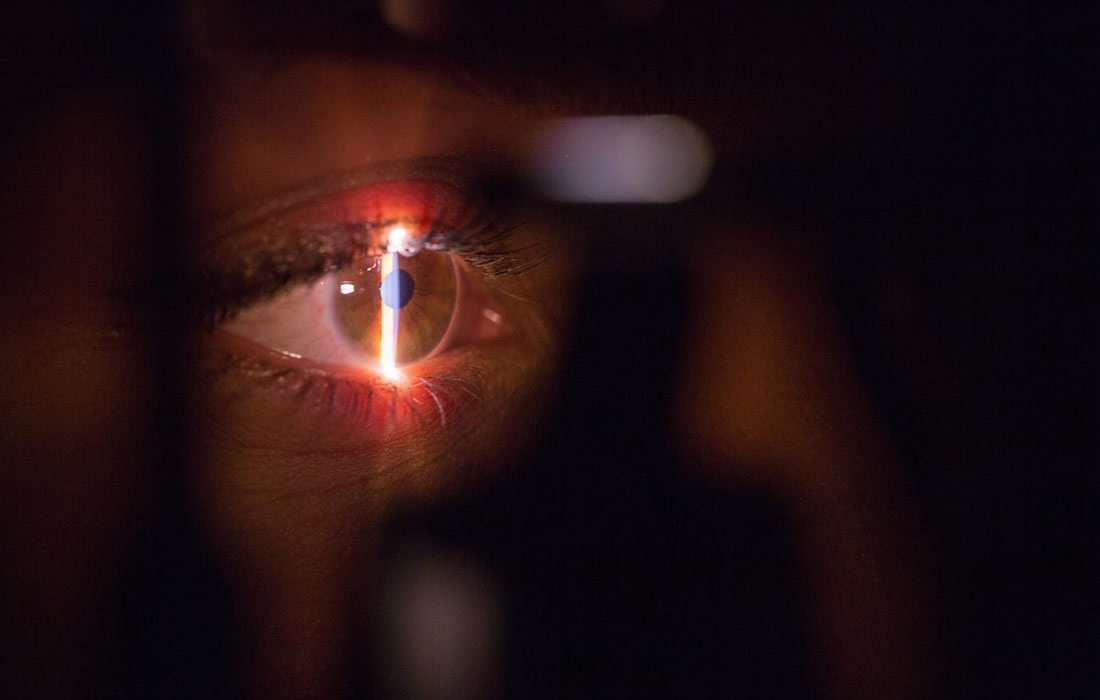Regenerative Medicine News and General Information
Eye Scans Could Detect Signs of Parkinson’s Disease Up to Seven Years Before Diagnosis
Markers that indicate the presence of Parkinson’s disease in patients on average seven years before clinical presentation have been identified by a UCL and Moorfields Eye Hospital research team.
The study identified markers of Parkinson’s in eye scans with the help of artificial intelligence (AI). Its analysis of the AlzEye dataset was repeated using the wider UK Biobank database (healthy volunteers), which replicated the discoveries. The use of these two large, powerful datasets has enabled the team to identify these subtle markers, even though Parkinson’s disease has a relatively low prevalence (0.1-0.2% of the population).
The use of data from eye scans has previously revealed signs of other neurodegenerative conditions, including Alzheimer’s, multiple sclerosis and, most recently, schizophrenia, in an emerging and exciting field of research referred to as “oculomics”.
High-resolution images of the retina are now a routine part of eye care – in particular, a type of 3D scan known as ‘optical coherence tomography’ (OCT). In less than a minute, an OCT scan produces a cross-section of the retina (the back of the eye) in incredible detail – down to a thousandth of a millimeter.
These images are extremely useful for monitoring eye health, but their value goes much further, as a scan of the retina is the only non-intrusive way to view layers of cells below the skin’s surface.
Lead author Dr Siegfried Wagner, said: “I continue to be amazed by what we can discover through eye scans. While we are not yet ready to predict whether an individual will develop Parkinson’s, we hope that this method could soon become a pre-screening tool for people at risk of disease.
“Finding signs of a number of diseases before symptoms emerge means that, in the future, people could have the time to make lifestyle changes to prevent some conditions arising, and clinicians could delay the onset and impact of life changing neurodegenerative disorders.”
Professor Alastair Denniston, said: “This work demonstrates the potential for eye data, harnessed by the technology to pick up signs and changes too subtle for humans to see. We can now detect very early signs of Parkinson’s, opening up new possibilities for treatment.”
Miss Louisa Wickham, Moorfields’ medical director, explained: “Increasing imaging across a wider population will have a huge impact on public health in the future, and will eventually lead to predictive analysis. OCT scans are more scalable, non-invasive, lower cost and quicker than brain scans for this purpose.”
Sources:
Siegfried K Wagner, Bart Liefers, Meera Radia, Gongyu Zhang, Robbert Struyven, Livia Faes, Jonathan Than, Shafi Balal, Charlie Hennings, Caroline Kilduff, Pakinee Pooprasert, Sophie Glinton, Meena Arunakirinathan, Periklis Giannakis, Imoro Zeba Braimah, Islam S H Ahmed, Mariam Al-Feky, Hagar Khalid, Daniel Ferraz, Juliana Vieira, Rodrigo Jorge, Shahid Husain, Janette Ravelo, Anne-Marie Hinds, Robert Henderson, Himanshu I Patel, Susan Ostmo, J Peter Campbell, Nikolas Pontikos, Praveen J Patel, Pearse A Keane, Gill Adams, Konstantinos Balaskas. Development and international validation of custom-engineered and code-free deep-learning models for detection of plus disease in retinopathy of prematurity: a retrospective study. The Lancet Digital Health, 2023; 5 (6): e340 DOI: 10.1016/S2589-7500(23)00050-X
University College London. “Eye scans detect signs of Parkinson’s disease up to seven years before diagnosis.” ScienceDaily. ScienceDaily, 21 August 2023. <www.sciencedaily.com/releases/2023/08/230821174246.htm>.
Images from:
Photo by Brands&People
https://unsplash.com/photos/sWQrD5s0fWc

